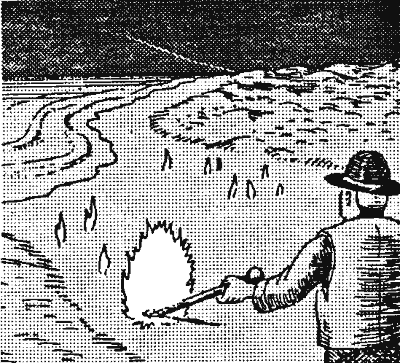 |
Science Frontiers ONLINE No. 130: JUL-AUG 2000 |
|
|
Bog Breath
The surfaces of bogs and fens in northeastern Minnesota may rise and fall by as much as 36 cm in a single day. This phenomenon, known as Mooratmung, or bog breathing, has been traditionally attributed to changes in water storage. However, the surface deformations recorded by static GPS [Global Positioning System] stations on bog and fen sites within the Red Lake peatland are more frequent and out of phase with precipitation events. These vertical fluctuations instead appear to be related to a complex interplay among climate, hydrology, and microbial gas-production. Climate-driven re-charge on bogs, for example, stimulates the production of biogenic gases by advecting root exudates deep into the peat profiles. Seasonal droughts, however, favor the formation of transient confining layers that trap biogenic gases into discrete pockets... Bog breathing may therefore be a surface manifestation of the accumulation and release of greenhouse gases in peat deposits.
(Glaser, Paul H. et al; "Bog Breathing: the Curious Interplay of Climate, Ground-water, and Greenhouse Gases in Boreal Peatlands," Eos, 80:F47, 1999.)
 Spontaneously igniting, biogenic gases are found in many marshy places. These eruptions were observed on an English mud flat in 1902. |
Comment. When bogs breathe they release plumes of flammable gases which probably give rise to the many observations of will-o'-the-wisps in marshy areas. Why these gas clouds are luminous remains mysterious. (GLN1 in Lightning, Auroras) Similar biogenic gases cause the mist-pouffers mentioned in the foregoing item. Obviously, the energy releases in will-o'-the-wisps are less powerful.
Other Sites of Interest
|